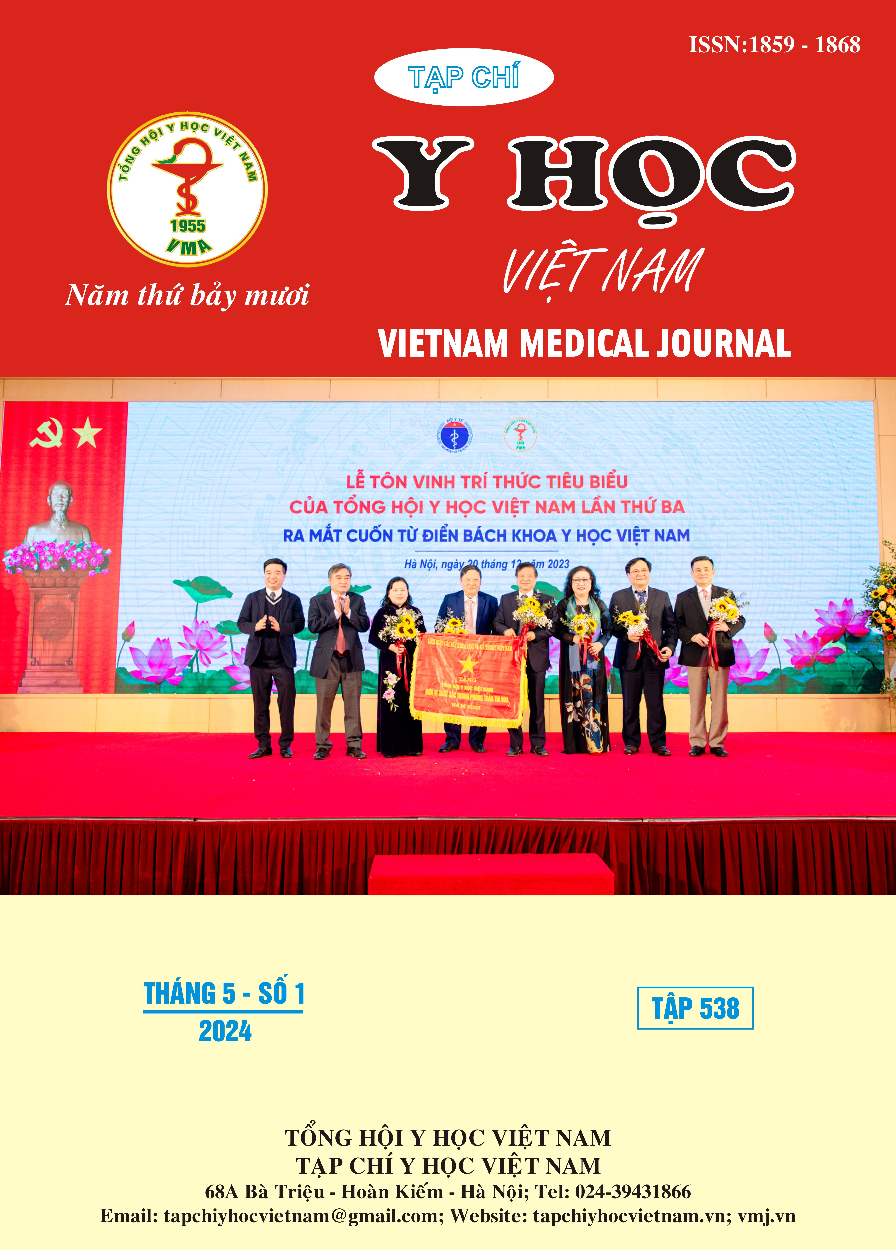HIỆU QUẢ ĐIỀU TRỊ CẮN NGƯỢC VỚI HÀM MYOBRACE I3 TRÊN HÀM RĂNG HỖN HỢP
Nội dung chính của bài viết
Tóm tắt
Trẻ trong độ tuổi răng hỗn hợp có thể có những vấn đề về đường thở, nhai, nuốt, nói, hình thái khuôn mặt và các thói quen xấu như mút ngón tay, thở miệng... Nếu được phát hiện sớm, được điều trị phòng ngừa và kịp thời sẽ giảm thiểu tối đa các vấn đề về khớp cắn cũng như chức năng hàm mặt, giúp cho việc nắn chỉnh răng sau này diễn ra dễ dàng và thuận lợi hơn. Việc sử dụng hàm chức năng như Myobrace đúng thời điểm, đúng chỉ định sẽ góp phần thay đổi chức năng cơ hàm mặt, hình dáng cung răng, giúp hàm mặt của trẻ phát triển theo hướng thuận lợi nhất có thể. Bài trình bày sẽ mô tả thiết kế, chức năng, chỉ định và những ưu điểm của hàm chỉnh nha chức năng Myobrace I3 đối với trẻ trong độ tuổi răng hỗn hợp. Mục tiêu: Đánh giá sự thay đổi trước sau điều trị trên lâm sàng và Xquang cephalometric sau khi điều trị cắn ngược vùng cửa trên hàm răng hỗn hợp giai đoạn sớm bằng hàm Myobrace I3. Đối tượng và phương pháp nghiên cứu: Nghiên cứu được thực hiện trên 30 bệnh nhân có cắn ngược vùng cửa trong độ tuổi răng hỗn hợp đến khám và điều trị tại Bệnh viện Răng Hàm Mặt Trung ương Hà Nội, sử dụng kết quả thăm khám lâm sàng và xquang. Sử dụng so sánh Pair T Test, sự khác biệt có ý nghĩa thống kê với p<0,005. Kết quả: Thói quen xấu đẩy lưỡi đã được loại bỏ 85,7%, Phanh lưỡi bám thấp được loại bỏ hoàn toàn 100%, vị trí lưỡi đặt thấp loại bỏ 80%. Thời gian điều trị trung bình đến khi hết ngược là 14,47 ± 1,31 tháng. Bệnh nhân tuân thủ tốt các bước điều trị. Trên phim Cephalometric: sự thay đổi cắn chìa sau điều trị tăng 3,65mm; góc trục răng cửa trên so với mặt phẳng nền sọ tăng 9,16o, sự khác biệt này có ý nghĩa thống kê p<0,005. Sự thay đổi về xương không có ý nghĩa thống kê. Kết luận: Hàm tháo lắp chức năng Myobrace I3 đem lại sự thay đổi về mặt chức năng, thay đổi ở răng trong khi sự thay đổi về xương là không đáng kể.
Chi tiết bài viết
Tài liệu tham khảo
2. Onodera, K., et al., Effects of functional orthodontic appliances in the correction of a primary anterior crossbite—changes in craniofacial morphology and tongue position. The European Journal of Orthodontics, 2006. 28(4): p. 373-377.
3. Sakata, T., A study on the relationship between the position of the hyoid bone in subjects with reversed occlusion and maxillofacial shape in childhood. Nihon University Dental Journal, 2001. 75: p. 28-37.
4. Wijey, R., Treatment for Class III Malocclusion: Surely we can do better? Australasian Dental Practice, 2017. 3: p. 80-84.
5. Monte Callado, F., M.L. Sperandeo, and C. Growth, Anterior crossbite correction in early mixed dentition stage using functional jaw orthopedics principles: a case report with two-years follow-up. Jaw Functional Orthopedics, 2021. 1(2): p. 62-74.
6. Achmad, H. and N. Auliya, Management of Malocclusion in Children Using Myobrace Appliance: A Systematic Review. Annals of the Romanian Society for Cell Biology, 2021: p. 2120-2136.
7. Nery, S.S., et al., Ortodontia Miofuncional-Sistema Myobrace® relato de caso clínico Myofunctional Orthodontics-Myobrace system® clinical case report. Brazilian Journal of Health Review, 2022. 5(4): p. 12147-12161.
8. Wiedel, A.-P. and L. Bondemark, Fixed versus removable orthodontic appliances to correct anterior crossbite in the mixed dentition—a randomized controlled trial. European journal of orthodontics, 2015. 37(2): p. 123-127.
9. Kizi, G., et al. Early treatment of a class III malocclusion with the myobrace system: clinical case. in 2nd International Congress of CiiEM-Translational Research and Innovation in Human and Health Science. 2017.


